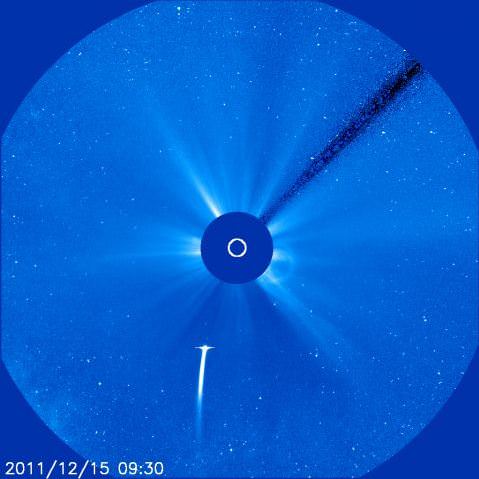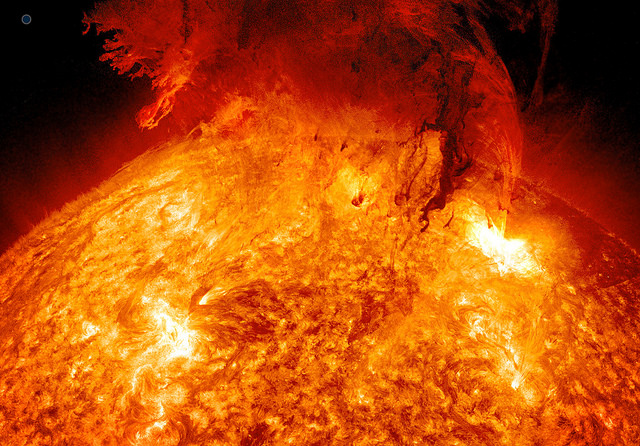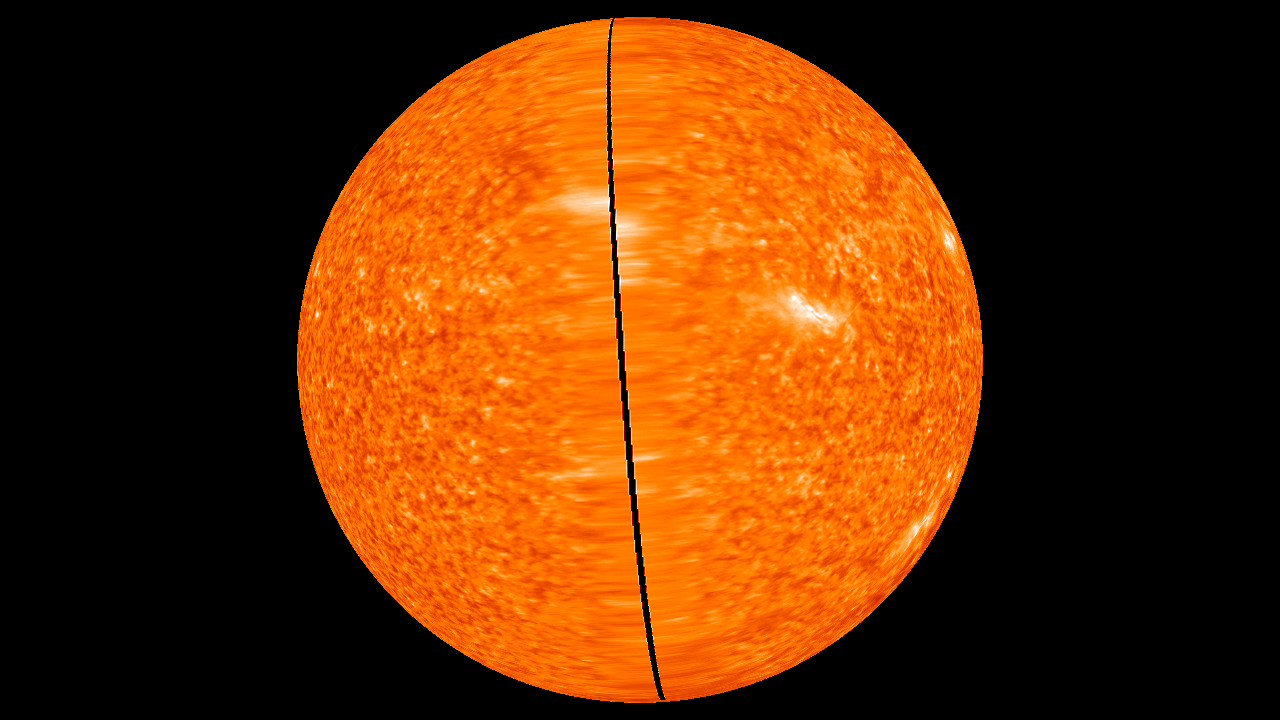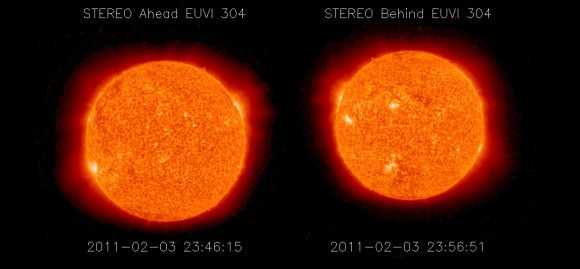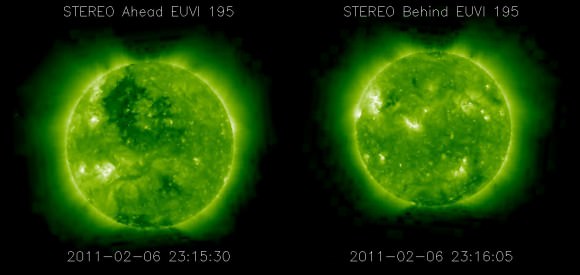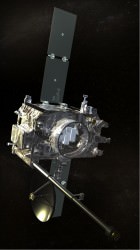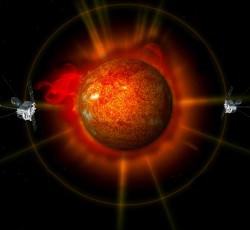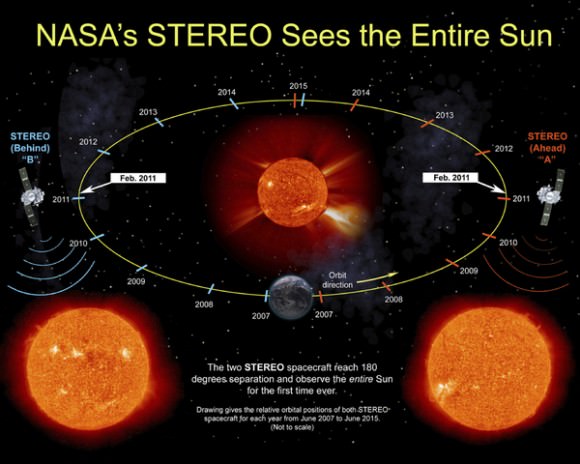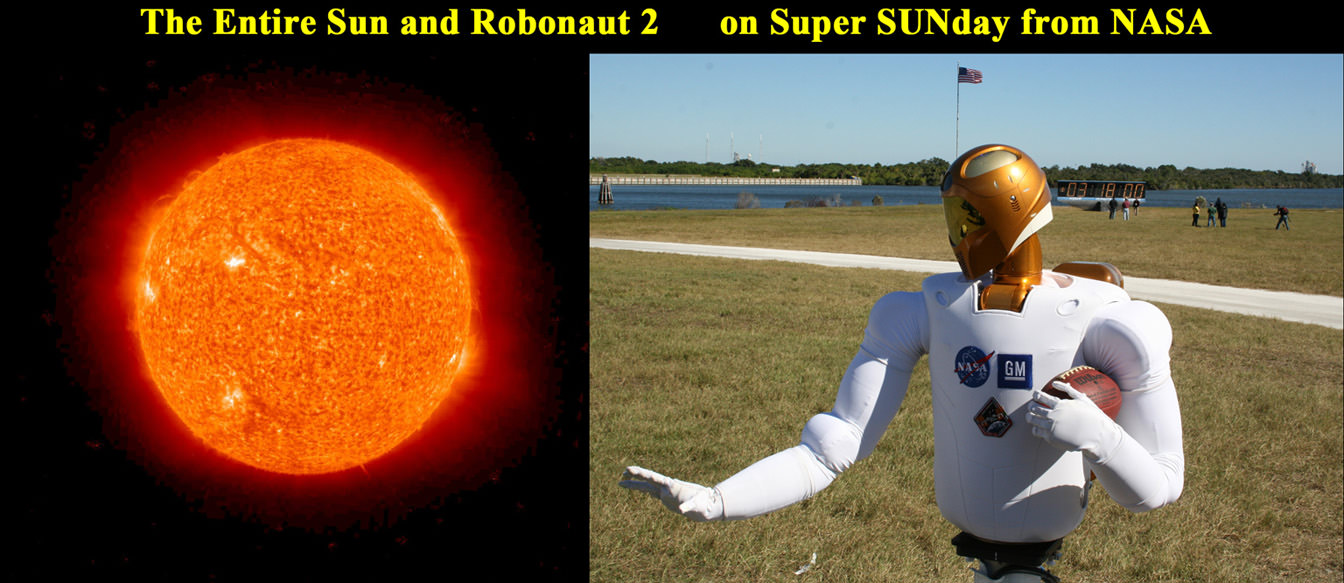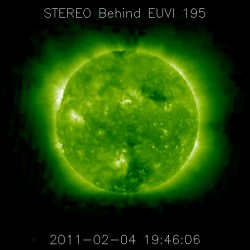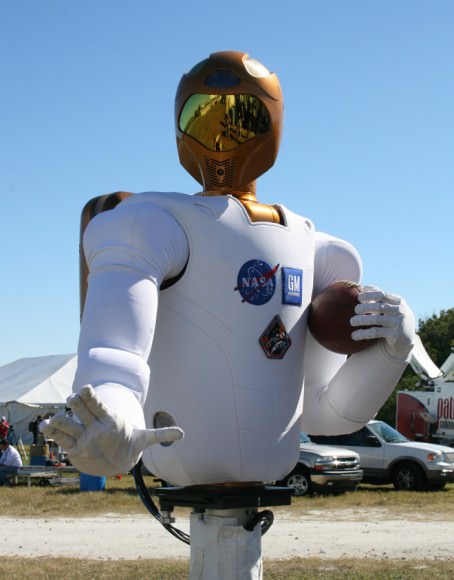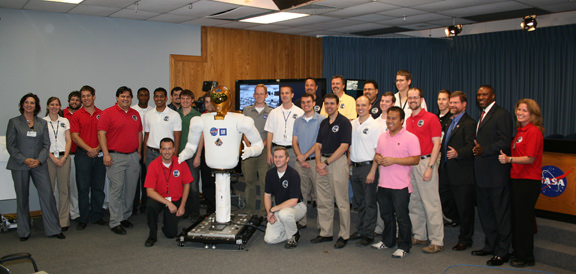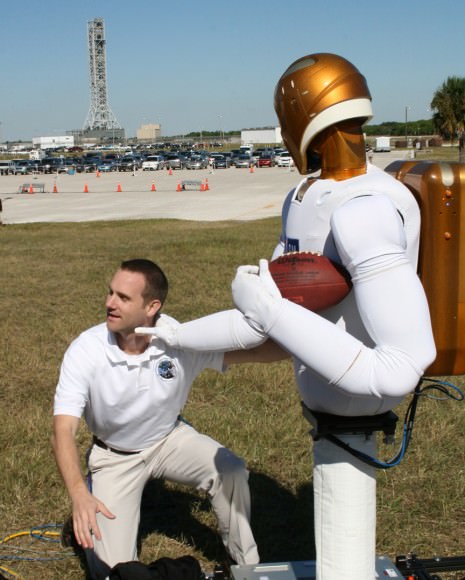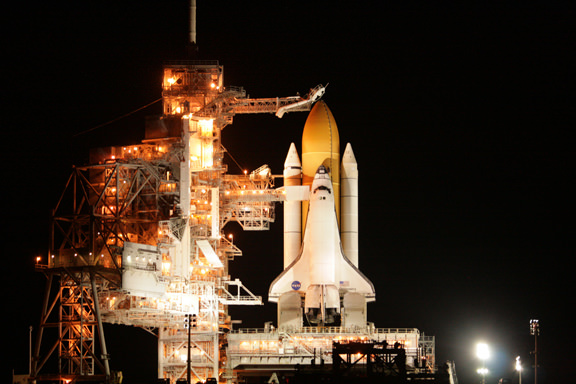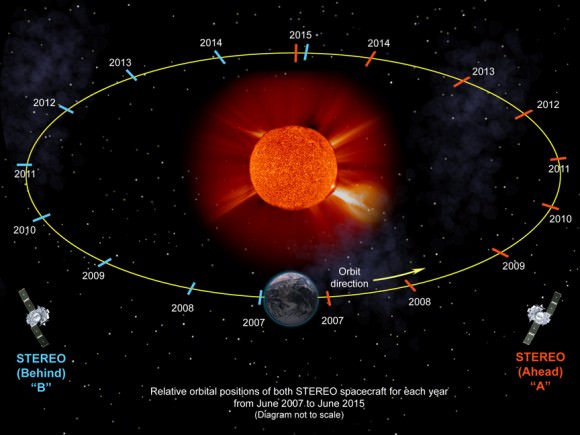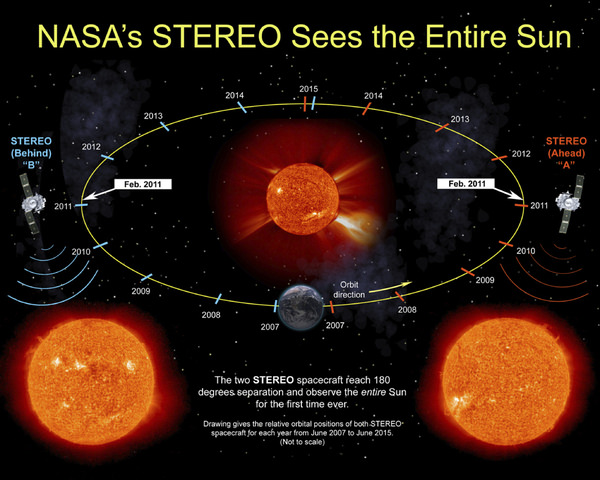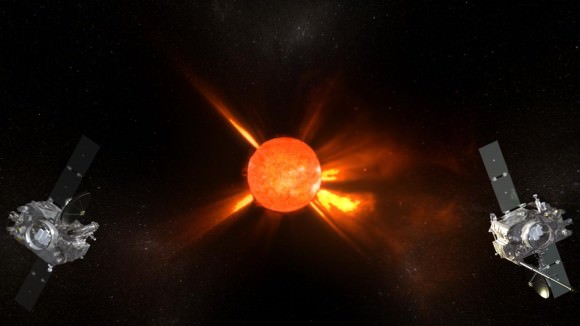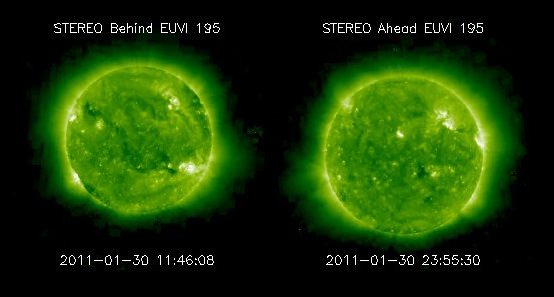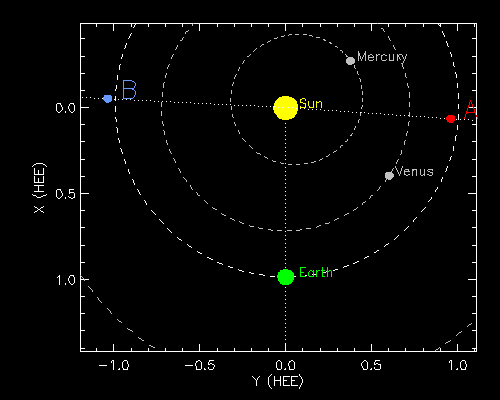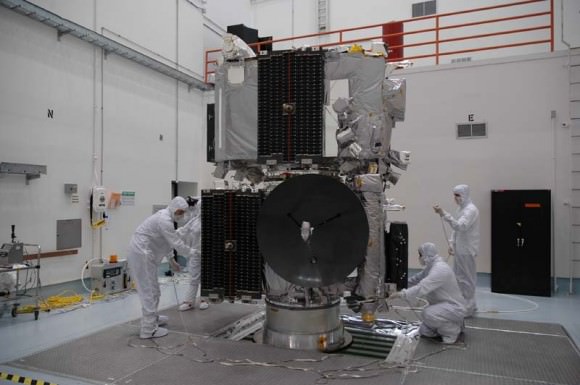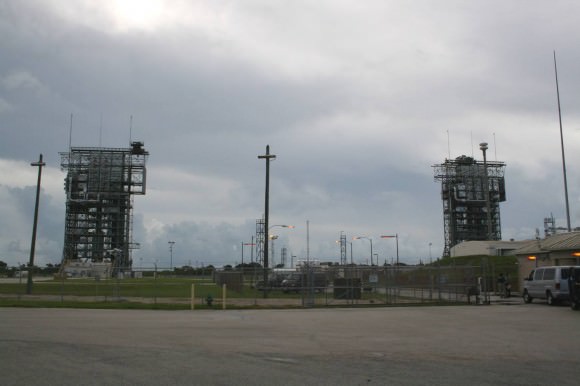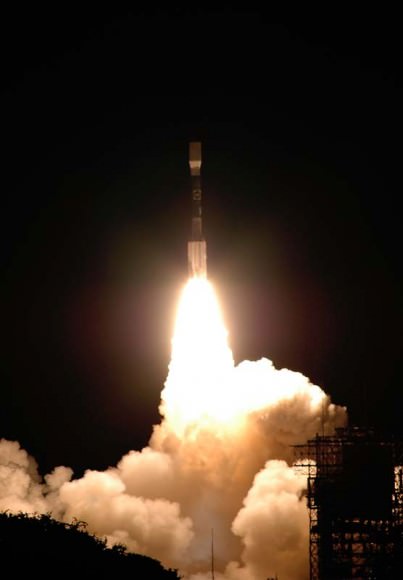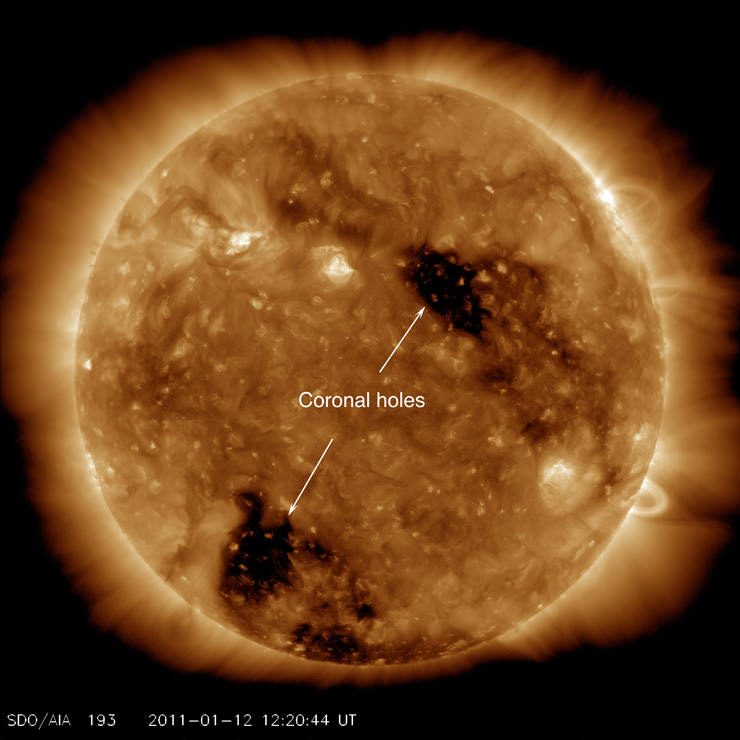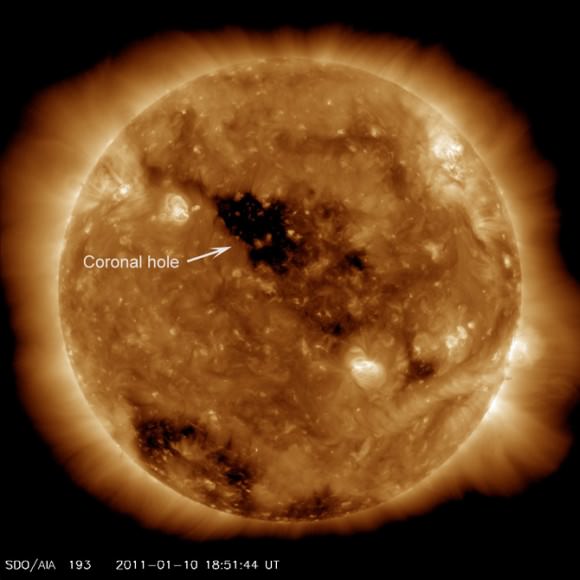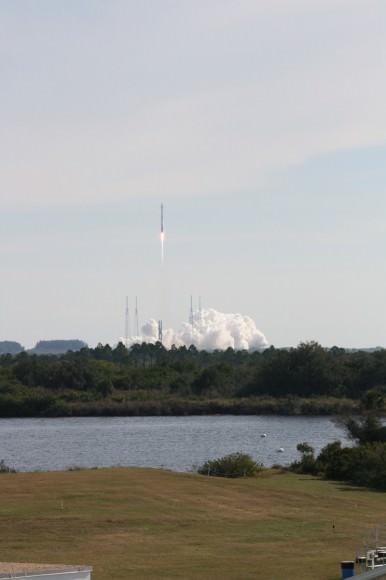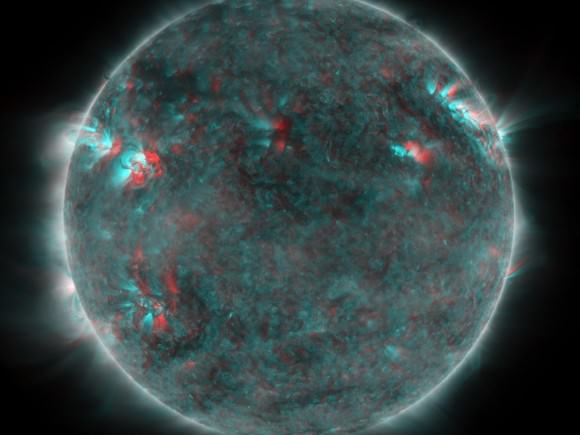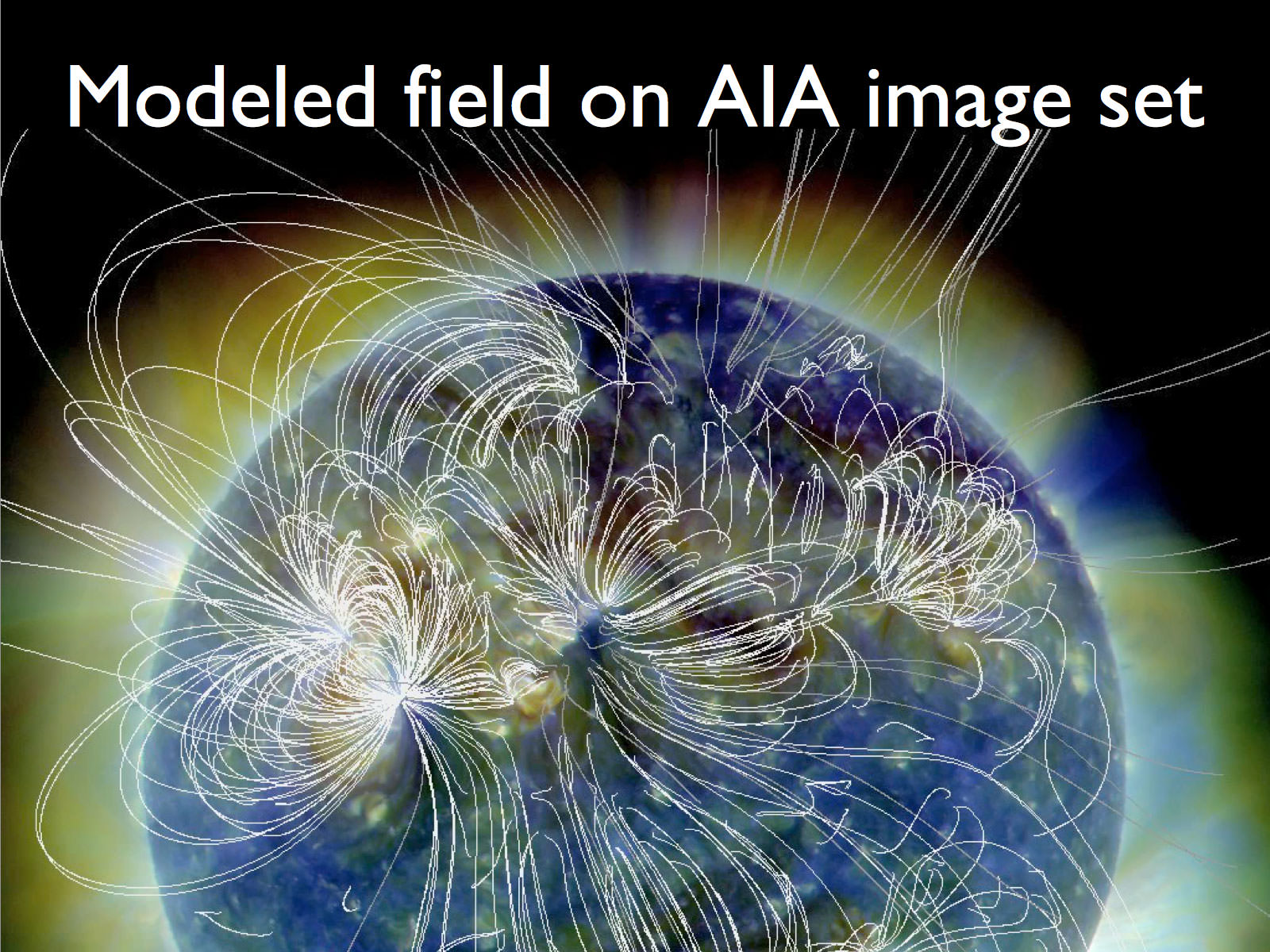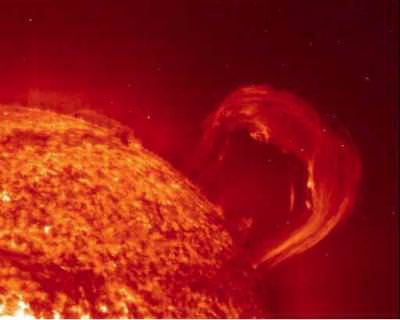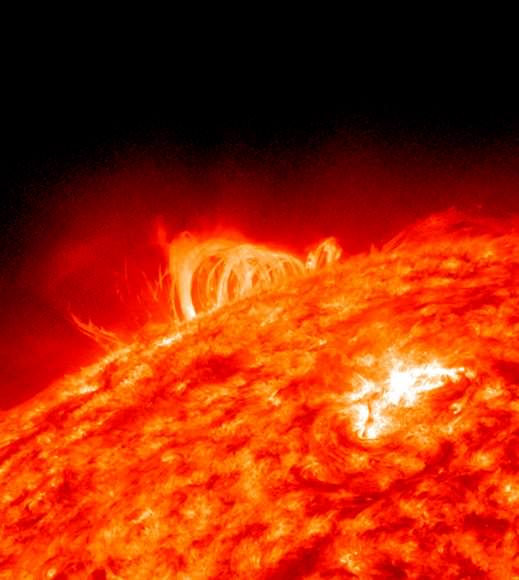A comet discovered on Dec. 2, 2011 is now on a near collision course with the Sun, and likely won’t survive such a close encounter. The best part is that you can follow along and watch as it happens! Comet C/2011 W3 Lovejoy will pass behind the sun at around 24:00 UTC (7 pm EST) on Thursday, Dec. 15, 2011 and probably won’t be seen again. In the video above, processed images from the STEREO A spacecraft shows Comet Lovejoy blazing towards the Sun, with the comet’s tail wiggling as it interacts with the solar wind.
The Solar Dynamics Observatory website has a special page where they will be uploading the latest images of the comet as it meets its fiery fate. As Comet Lovejoy moves toward perihelion, the SDO team will point SDO a little to the left of the Sun to try and see the tail of the comet with their instruments. This website will allow you to see those images as quickly as they can download them from the spacecraft.
Science live and in action!
Astronomers and various spacecraft have been keeping an eye on Comet Lovejoy the past few days as this Kreutz-group comet headed towards the Sun. Just today (Thursday) the images from the SOHO spacecraft showed the comet sprouting a bulbous head. This is occurring because the comet is getting so bright, it is overwhelming the detectors on the SOHO satellite. “The photons are ‘bleeding’ out to form that cross-like pattern,” said Dan Pendick on the Geeked On Goddard website.
Pendick also quoted solar scientist Jack Ireland from Goddard, who noted that at times two tails can be seen on the comet. “The thick white tail is primarily dust breaking away from the comet nucleus,” Ireland said, as the Sun’s radiation and solar wind that knocks material off the comet nucleus. But to the left is a tail of charged particles (ions) being deflected to the side by the magnetic field carried by the solar wind.
At its closest approach, Comet Lovejoy will pass just 120,000 km above the solar surface. At that distance, the icy comet is not expected to survive the Sun’s fierce heat. But the comet could actually disintegrate at any moment. Kreutz comets have a tendency to evaporate as they approach, or pass close to the Sun.
If the comet does stay the course and stay visible until it goes around the Sun, we likely won’t be able to see its demise because its closest approach will take place on the far side of the Sun.
But this is a great chance to watch this event as it is about to happen.
“We have here an exceptionally rare opportunity to observe the complete vaporization of a relatively large comet, and we have approximately 18 instruments on five different satellites that are trying to do just that,” wrote Karl Battams, from the Naval Research Laboratory, who curates the Sun-grazing comets webpage, and has been documenting Lovejoy’s journey.
Amateur astronomers have been trying to capture this event as well, with everyone wondering how bright the comet will get. For updates from amateur astronomers, check out the Yahoo Groups comet observers forum.
Comet C/2011 W3 Lovejoy was actually discovered by an amateur, Australian astronomer Terry Lovejoy (hence the comet’s name.) This is the first Kreutz comet found from a ground-based observer since 1970, and it was spotted with a modest 8″ telescope too! You can read Lovejoy’s tale of his discovery here.
On average, new Kreutz-group comets are discovered every few days by spacecraft like SOHO, but from the ground they are much rarer to see and harder to discover.
“This is the first ground-based discovery of a Kreutz-group comet in 40 years, so we really can’t be sure just how bright it will get,” said Battams. “However, I do think that it will be the brightest Kreutz-group comet SOHO has ever seen.”
Comet Lovejoy’s spectacular progress can also be monitored via the web at SOHO’s LASCO instrument page.
For the SDO special webpage, images from SDO take about 30 minutes to move from the spacecraft until they are available on the website. The SOD team plans to off-point the spacecraft at 23:30 UTC (6:30 pm ET) and return to normal solar observing at 12/16 00:30 UTC (7:30 pm ET). Images should start arriving by 24:00 UTC (7 pm EST.)

